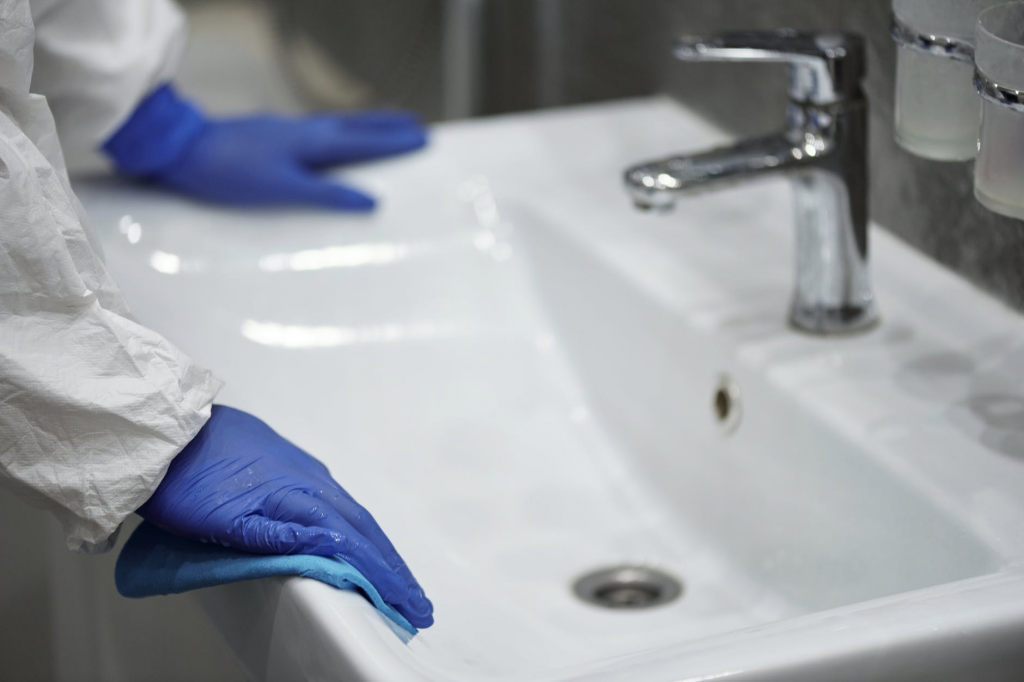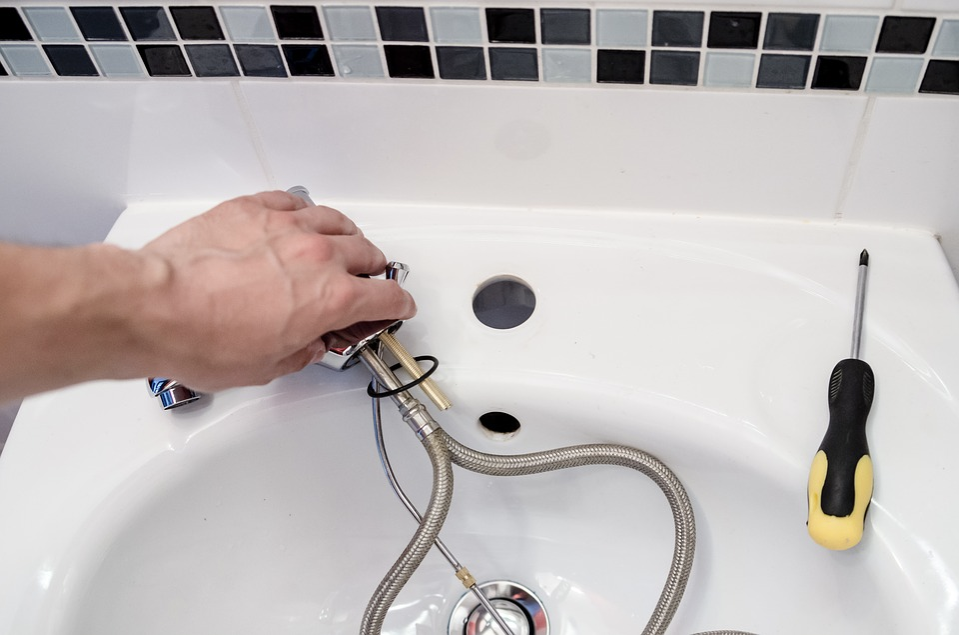Imagine you’re having a lovely evening meal with friends. Shortly afterward, your friends leave. You speed off to the kitchen to wash the utensils, so you don’t miss your favorite show. A few minutes into washing and you notice the water isn’t draining from the sink. You check to see if anything is blocking the sink – nothing.
Many homeowners can relate to this experience. It’s one of the typical inconveniences of clogged drains. Clogged sinks are primarily attributed to food debris and soap wastes which are a nightmare for smooth draining. Fortunately, clogged kitchen sinks are some of the most straightforward home repairs to tackle. But before you call your local estate handyman, here are a few basic methods of unclogging your kitchen or bathroom sink. What’s more, they’re easy and inexpensive!
1. Start with the Garbage Disposal
Most modern sinks come with a garbage disposal unit. In most cases, this can be the culprit of your drainage issues. If the debris is in the disposal unit, switching it on will unclog the debris material. Sometimes, a dysfunctional or overheated disposal unit may not turn on. However, All Service Plumbers advise homeowners to activate the reset switch located at the bottom or side for an easy reboot. Once you’ve rebooted the disposal, try switching it on again to clear the clog. If you switch on the disposal and hear a low humming sound, chances are it’s jammed or damaged. Remember: don’t try fixing your disposal unit without disconnecting the power to the unit. Never – we mean NEVER – try to stick your finger or hand in the disposal unit. Once you’ve disconnected the power, you can try to free the clog in the disposal by manually turning the blades.
2. Use Hot Water
This could be the most straightforward and less inexpensive solution of all methods. It also works surprisingly well with most bathroom clogs. It’s typically ideal when dealing with blockages caused by soap scum. In most cases, hot water is most efficient when there’s a slow drain. This means you might need to use another method if there’s plenty of water already sitting in your sink. First, fill up a pot or a kettle with water and bring it to a boil – you’ll need to use something that holds more water. Pour the hot water into the drain in about three-to-four different stages. You’ll need to let the water sit in the sink for a few minutes. If the water still stalls, it means the clog is still there. This method works effectively, and the results should also be quickly visible.
3. Plunge In!
A plunger is a useful tool when dealing with a slow drain sink. In most cases, you don’t have to reserve it for a complete drain stoppage. Plunging on your sink drain several times can help unclog food residue and debris buildup in the pipe. To ensure the plunger’s effectiveness, you can cover the sink overflow with duct tape or rug before plunging. This helps to create a seal that is required to clear any blocked pipe. Repeat the plunging process until the water drains freely. Try and do the plunging vigorously until you hear the suction clear the debris. Next, remove the plunger and flush the drain with warm water. However, if the sink doesn’t drain appropriately after several plunging attempts, it’s time to switch to a different method.
4. Baking Soda and Vinegar
For this technique, you’ll need to empty any standing water in your sink. This method is a natural alternative and one that any DIYer can try. What’s more, vinegar and baking soda are common items you can find in any household or a grocery store near you. First, empty any stalled water from your sink with a cup or jug. Pour the equivalent of one cup of baking soda into the drain. You can use a spoon or a spatula to push the baking soda down the drain if necessary. Next, add about one cup of vinegar down the drain opening. You’ll need to place a stopper or cover on the drain to seal the opening. Allow the mixture to sit for about 15-20 minutes. You’re also free to use boiling water to unclog more heavy debris. However, like many natural unclogging methods, this technique doesn’t have a 100 percent success rate.
5. Snake the Clog Out!
Some clogs will put up a big fight before they can unblock. For such clogs, you require a plumber’s snake to fight the blockage. This tool has a coiled spiral snake that reaches down into the drain. Once the tool hits a barrier, you can twist the handle to topple the debris and pull it out of the drain. Consider buying an electric plumber’s snake. It packs more power to handle blocked drains. If a plumber’s snake is not available, try and create a makeshift one with a strongly wired coat hanger. You can use pliers to disentangle the hanger into a useful long piece of wire. Create a hook on one end, as this is what you’ll use to grab onto the clog. Use the pliers to adjust the angle of the hook so it can fit through your drain opening.
6. Consider Cleaning the Stopper
A sink stopper is a small raised metal device used to plug a sink’s drain on command. It tends to catch hair, soap, and other residue. Once this trapped debris matter grows out of proportion, your sink starts draining slowly. In most modern sinks, you can remove the stopper by unscrewing it.

In the older sink models, the stopper is tethered to a small wire. If you have the modern version, you’ll need to follow a couple of steps. First, check underneath your sink where the basin connects to the pipe. You’ll see a small rod with a nut and clip fixed firmly to the pipe. Twist the nut to detach it and squeeze the clip to release the rod. Now, carefully lift the stopper out of the drain. If it’s covered in grunge and hair, use a rag to wipe off all the residues thoroughly.
And there you have it! The top six expert tips to fix your clogged sink. Feeling too lazy to do it yourself? You can call a professional plumber near you to have the issue fixed. Most plumbers carry a wealth of experience and will fix your sink within no time. Finally, consider doing regular checks on your sink to ensure it’s running smoothly. Please don’t wait until it’s too late!










